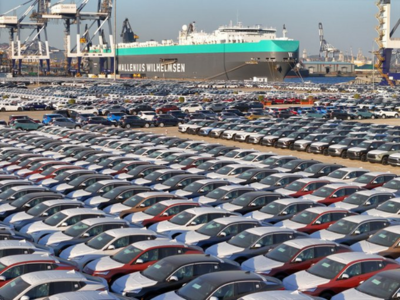China Suspends Extra Tariffs on U.S. Goods for One Year Following Xi-Trump Summit
- by Editor.
- Nov 04, 2025

Credit: Freepik
China has announced it will suspend additional tariffs on U.S. goods for one year starting November 10, marking a significant de-escalation in trade tensions following last week’s summit between Presidents Xi Jinping and Donald Trump in South Korea.
The move aims to stabilize a bilateral relationship strained by months of escalating duties that had reached triple-digit levels earlier in 2025.
According to a statement from China’s State Council, the country will maintain a 10% tariff on U.S. imports but suspend the additional 24% levy. The truce also includes a pause on export restrictions for rare earth technologies—vital to electronics and defense industries—and a halt to retaliatory port fees targeting U.S. shipbuilding.
In return, the United States agreed to suspend export restrictions on Chinese firms listed on the Entity List and to lift duties on certain Chinese-manufactured goods. The reciprocal steps come as part of a broader agreement reached during the Asia-Pacific Economic Cooperation (APEC) summit.
China also rolled back its March 2025 retaliatory tariffs, including a 15% duty on U.S. agricultural products such as chicken, wheat, corn, and cotton, and a 10% levy on soybeans, pork, beef, and dairy. The rollback is expected to benefit American farmers, whose exports to China had been cut in half over the past year.
While trade officials in both countries praised the agreement, calling it a “pragmatic step” for global supply chains, analysts remain cautious. Julian Evans-Pritchard of Capital Economics warned that the truce offers only “temporary relief” and does not resolve deeper disputes over technology transfer and intellectual property rights.
The tariff pause also aligns with President Trump’s push to address fentanyl trafficking, as the 10% base tariff remains in place. Markets are now watching closely for ripple effects, particularly in commodities like soybeans, which make up a significant portion of U.S. exports to China.













0 Comment(s)